HOTEL QB [Korea Quality] / 호텔큐비(호텔QB) [한국관광 품질인증]
2.1Km 2023-04-13
322-10, Jong-ro, Jongno-gu, Seoul
+82-10-2408-2842
Located just a three-minute walk away from the Dongdaemun Subway Station in Seoul, the hotel offers easy access for shopping and culture tour. Airport bus passes beside the building and Dongdaemun Shopping Complex, home to large shopping malls and wholesale fashion shops, are only a ten-minute walk away.
QB, which stands for boutiQue Business, reflects our commitment to guests on business trips with high-quality service and rooms. Customized trip consulting service is provided for those who are visiting without information; complimentary luggage storage service is also available.
Hotel QB has 21 rooms in total, ranging from single rooms for solo travelers to quad rooms for up to six persons. The rooms with modern and stylish interior design in pastel tone create cozier atmosphere. Internet is provided without charge in all rooms, and shared PCs are available in the shared kitchen. Guests may also cook for themselves as a microwave oven, an induction, a refrigerator, and kitchenware are available in the shared kitchen.
Neighboring tourist attractions such as Dongdaemun Shopping Complex are always busy with travelers. Dongdaemun Fashion Street, the trend-setting spot for the young, gets even livelier at night, whereas Dongdaemun Design Plaza (DDP) is famous for its night view. The night market, which opens on Friday and Saturday evenings, offers more things to eat and see. In addition, Dongdaemun History and Culture Park, Cheonggyecheon Second-hand Book Shop Street, and Dongmyo Flee Market are close to the hotel. Gwangjang Market, Jongmyo Shrine, and Daehakro Street are located one subway station away, which is also a walkable distance.
Centro Comercial Mesa de Namdaemun (남대문 메사)
2.1Km 2024-01-25
Namdaemunsijang 10-gil 2, Jung-gu, Seúl.
Suyeonsanbang (수연산방)
2.1Km 2024-07-19
8, Seongbuk-ro 26-gil, Seongbuk-gu, Seoul
Suyeonsanbang, a traditional Korean tea house located in Seongbuk-dong, was originally the house where the late Korean author Lee Tae-Jun wrote many of his books. Now, his estate has opened Suyeonsanbang’s doors to the public in the form of a charming and peaceful tea house. Famous for its savory tea, beautiful nature, and rich history, Suyeonsanbang has been covered by a variety of foreign media outlets like NHK (Japan), BBC (UK), French TV channels, and numerous Japanese magazines. To take a break during the summer heat, visitors come to Suyeonsanbang to try their patbingsu (shaved ice with red beans), one of its summer specialties. So come relax and be inspired in this traditional Hanok tea house.
Museo de Arte de Seúl, sede central en Seosomun [SeMA] (서울시립미술관(서소문본관))
2.1Km 2025-05-13
Deoksugung-gil 61, Jung-gu, Seúl
El museo que une el palacio Deoksugung con el palacio Gyeonghuigung fue construido en la parte restante de la antigua Corte Suprema en el estilo de los años 1920. Los 6 espacios de exposición más importantes son el vestíbulo principal, la sala de esculturas y la sala especial que expone colecciones de arte moderno de Corea. En el vestíbulo Chon Kyung-Ja, situado en el segundo piso, los visitantes podrán contemplar 93 pinturas procedentes de donaciones. Principalmente retratos o pinturas de naturaleza muerta creadas de 1940 a 1990 por el artista Chon Kyung-Ja, considerada como la principal pintora femenina coreana. La sala de arte experimental puede acoger alrededor de 200 visitantes y tiene una multifuncionalidad ya se trate de proyecciones cinematográficas, música, conciertos, teatro, etc. El museo tiene una tienda de arte y una cafetería. Después de la visita del museo, tómese el tiempo de pasear y apreciar el lugar, dé una vuelta por la tienda de arte.
Primera Iglesia Metodista de Jeong-dong (정동교회)
2.1Km 2022-03-31
Jeongdong-gil 46, Jung-gu, Seúl
La Iglesia de Jeong-dong de Seúl, fundada en 1898, fue la primera iglesia protestante en Corea. La iglesia tenía 380㎡ cuando se construyó, pero como se añadieron edificios en cada ala en 1926, hoy en día esta iglesia ocupa una extensión de 579 ㎡. La Iglesia de Jeong-dong ha sido designada como Sitio Histórico, mostrando una arquitectura gótica al estilo norteamericano. Dentro del terreno de la iglesia, se hallan un busto del fundador, el pastor Appenzeller, y un monumento en conmemoración del 50º aniversario de la fundación. En 1889, la iglesia apareció en una revista mensual llamada Church por celebrar la primera reunión de estudios de la Biblia en Corea, y también era una de las iglesias que lideraban las actividades misioneras. La Iglesia de Jeong-dong está situada en el centro de la hermosa calle Jeong-dong de Seúl, una zona que presenta un paisaje espléndido en otoño cuando las hojas se caen de los árboles. En sus inmediaciones se encuentran el Teatro Jeongdong, el palacio Deoksugung y el Museo de Arte de Seúl, por lo que esta área se convierte en un lugar perfecto para el turismo.
Mongmyeoksanbang (목멱산방)
2.1Km 2021-03-24
71, Toegye-ro, 20-gil, Jung-gu, Seoul
+82-2-318-4790
It is a house where you can eat various kinds of bibimbap. This restaurant's signature menu is bibimbap. This Korean dishes restaurant is located in Jung-gu, Seoul.
NUHADANG [Korea Quality] / 누하당 [한국관광 품질인증]
2.1Km 2020-09-10
49-7, Pirundae-ro, Jongno-gu, Seoul
010-9692-1330
Guesthouse Nuha is a ‘hanok’ or traditional Korean house consisting of four guestrooms located in Nuha-dong, Seochon (west of Gyeongbokgung Palace, Jongno, Seoul) where many Confucian scholars and artists lived during the Joseon Dynasty.
Exuding a refined atmosphere, Guesthouse Nuha is very popular among not only domestic visitors but also foreign tourists who want to experience the flavor of Korea in a cozy hanok. All four guestrooms (An-bang, Sarang-bang, Geul-bang, and Byeol-dang) are covered with eco-friendly hanji (traditional Korean paper handmade from mulberry tree) wallpaper, and are equipped with a thick cotton-wool comforter and pillows imbued with the scent of Hinoki cypress tree to help guests relieve their fatigue.
Breakfast is served free of charge. Guests can also experience traditional Korean culture here, such as playing a Korean musical instrument (janggu or double-headed drum), playing a game of yut in the yard, or wearing hanbok (traditional Korean clothes). Although a local bus service passes through the village, it is highly recommended to take a quiet leisurely around the area.
Parque Sajik de Seúl (사직공원(서울))
2.1Km 2022-09-19
Sajik-ro 89, Jongno-gu, Seúl
El parque Sajik es uno de los tres parques más famosos en Jongno-gu, junto con los parques Tapgol y Samcheong. Situado al oeste de Cheong Wa Dae, cerca del monte Inwangsan, el parque tiene unas impresionantes dimensiones de 188.710 m².
El nombre del parque fue elegido en 1395, cuando Taejo Lee Sung-gye hizo su primer Sajikdan (altar a los dioses del Estado) junto con el santuario Jongmyo, en el centro del parque. "Sa" se refiere a la deidad de la Tierra, mientras que "jik" hace referencia a la deidad de los cinco granos. Varios rituales por buenas cosechas tuvieron lugar regularmente en el Sajikdan; sin embargo, el área no fue reconocida como un parque hasta 1922, durante el período colonial japonés.
En el parque se encuentran muchos parques infantlies, estatuas de Shin Saimdang, Hwanghakjeong y Yi I (nombrado a menudo por su nombre de escritor, Yulgok), y la Biblioteca Municipal Infantil. El santuario Dangun y la Biblioteca de Jongno se encuentran por la zona. Siguiendo el camino cercano al parque Sajik durante 5 minutos, los visitantes pueden llegar a la ruta para excursionistas del monte Inwangsan con relativa facilidad.
Nuwa [Korea Quality] / 누와 [한국관광 품질인증/Korea Quality]
2.1Km 2021-03-29
3-1, Pirundae-ro 5na-gil, Jongno-gu, Seoul
This hanok (traditional Korean house) is located deep in the Seochon Village, west of Seoul’s Gyeongbokgung Palace. Its tasteful renovation of a small 33 m2 hanok made it highly popular among the younger guests. The courtyard has a low maple tree and tastefully arranged stones, while the hanok is capable of accommodating up to 2 persons.
This L-shaped hanok has a full window wall facing the living room, which is furnished with a low walnut table and a bathtub. Visitors can enjoy premium tea at the table. The bathtub, which is connected to the table at one end, can be used mainly for a foot bath with bath salts that assist circulation. There is also a restroom in the building.
Nuwa’s bedroom has a circular window, much like the full moon, with a view of the garden and the fringes of the Inwangsan Mountain.
Summit Hotel Seoul (써미트 호텔 서울)
2.1Km 2024-03-05
Jangchungdan-ro 198, Jung-gu, Seúl
El Summit Hotel Seoul fue inaugurado en septiembre de 2013 en pleno centro de la ciudad de Seúl. Es un edificio de 3 subsuelos y 9 pisos, con un total de 190 habitaciones, entre las que hay de tipo Standard, Deluxe y Royal, entre otras. Tiene recepción las 24 horas y es perfecto para celebrar reuniones de negocios, gracias a sus amplias y cómodas instalaciones. Hay una cafetería en el área de la recepción.
![HOTEL QB [Korea Quality] / 호텔큐비(호텔QB) [한국관광 품질인증]](http://tong.visitkorea.or.kr/cms/resource/54/2634454_image2_1.jpg)
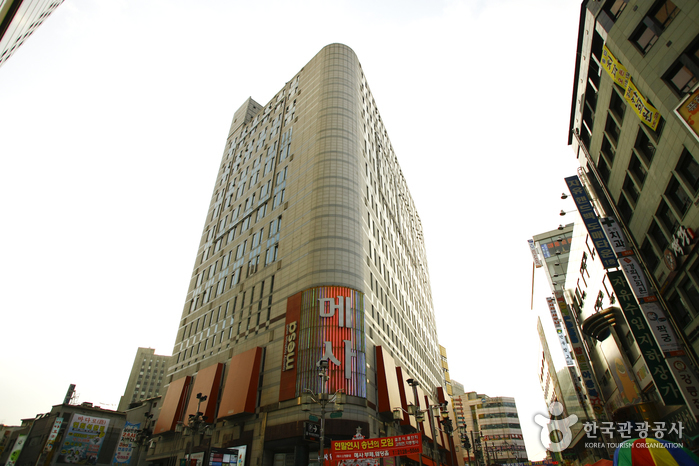

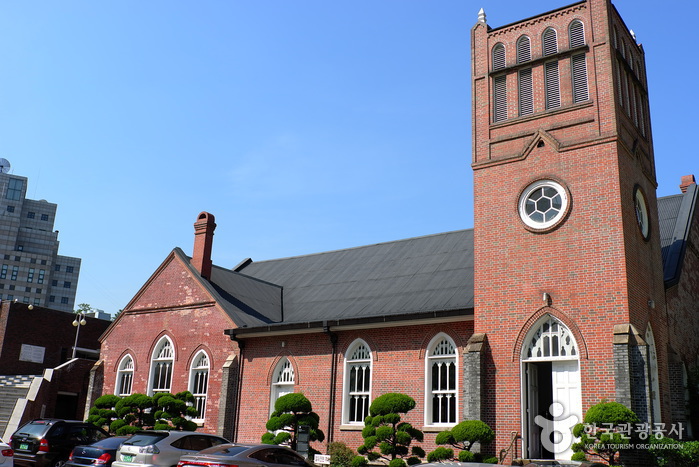
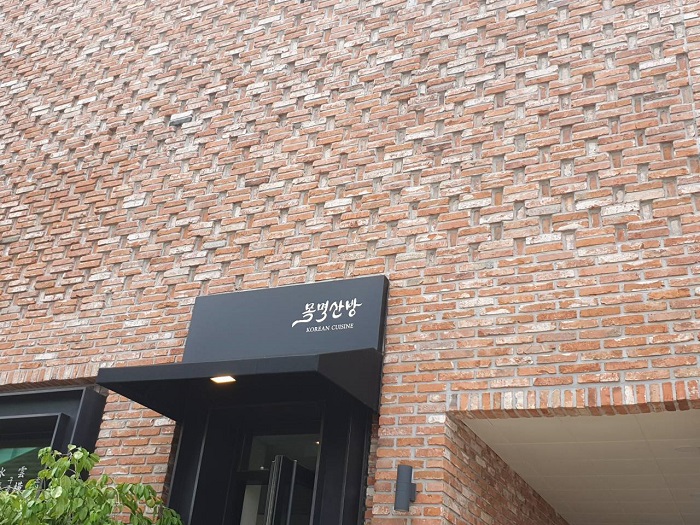
![NUHADANG [Korea Quality] / 누하당 [한국관광 품질인증]](http://tong.visitkorea.or.kr/cms/resource/58/2532358_image2_1.jpg)
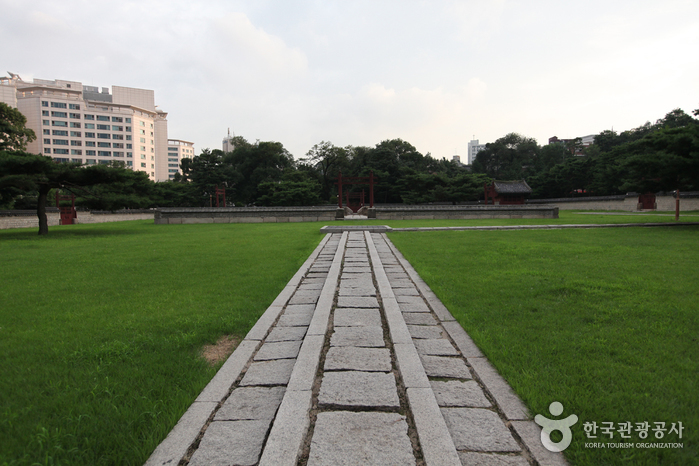
![Nuwa [Korea Quality] / 누와 [한국관광 품질인증/Korea Quality]](http://tong.visitkorea.or.kr/cms/resource/07/2707607_image2_1.jpg)
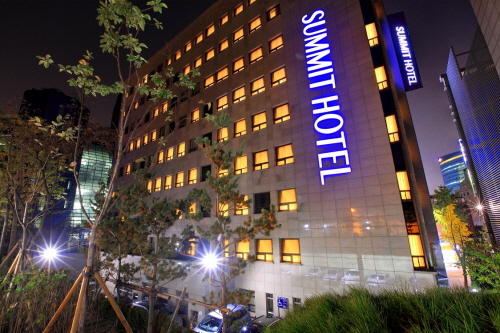
 Español
Español
 한국어
한국어 English
English 日本語
日本語 中文(简体)
中文(简体) Deutsch
Deutsch Français
Français Русский
Русский